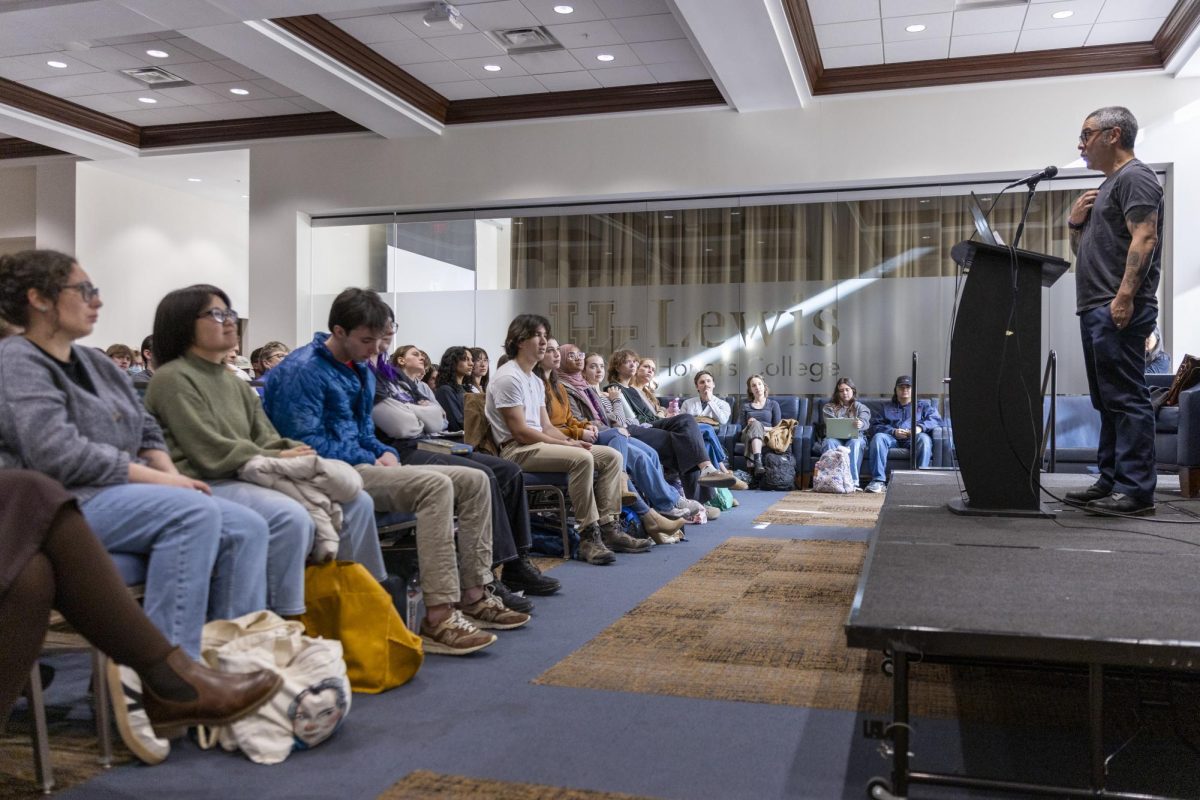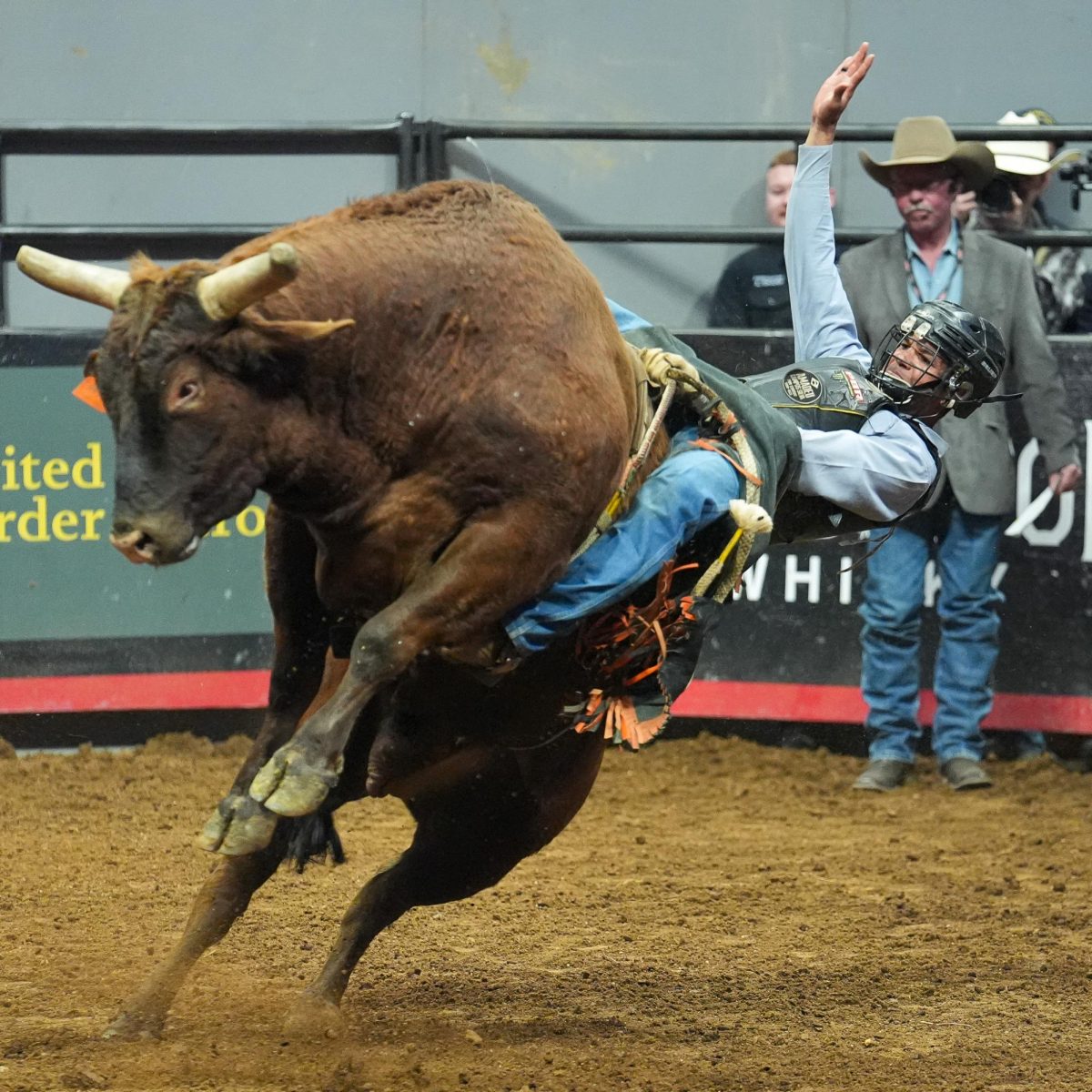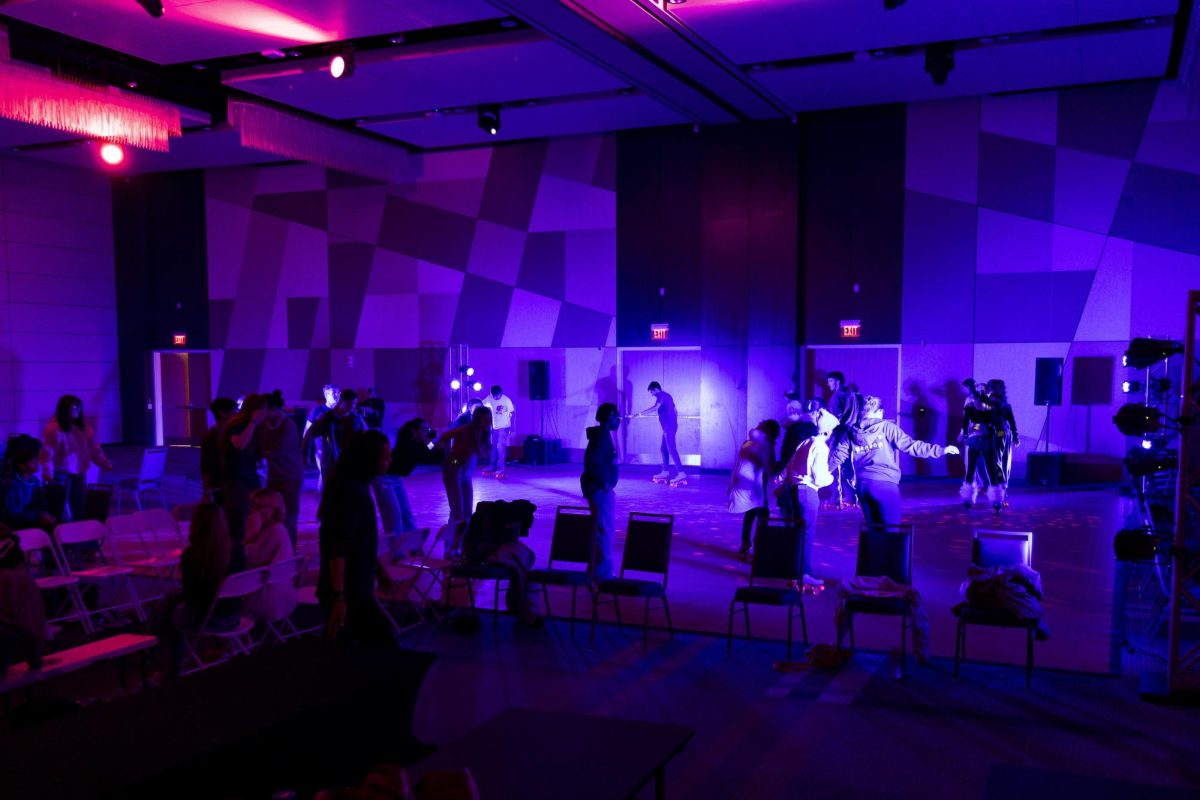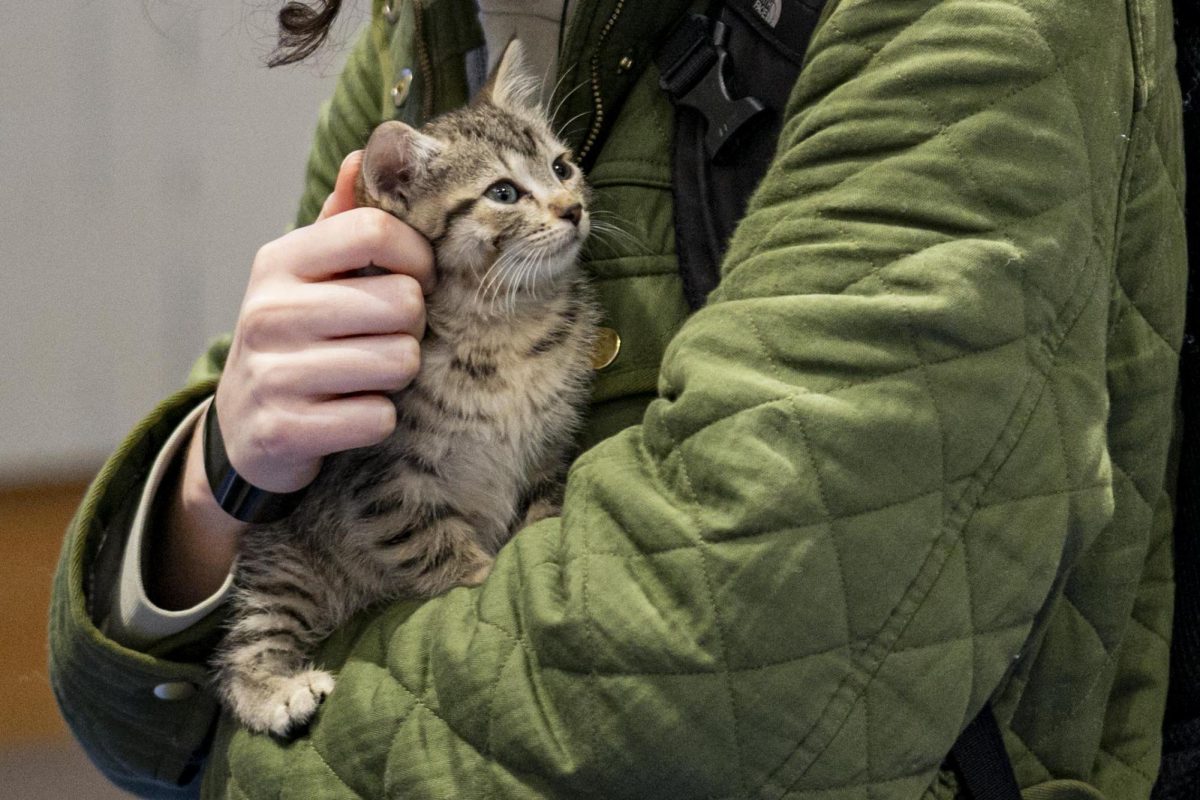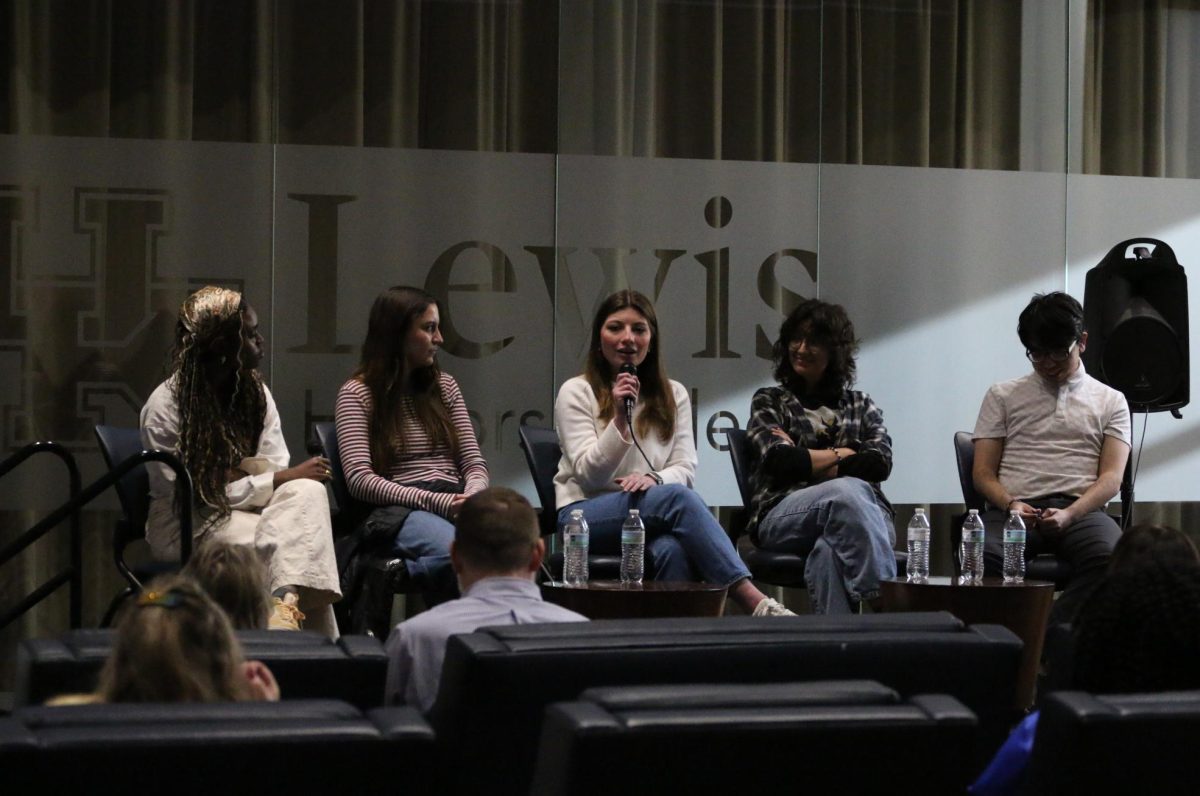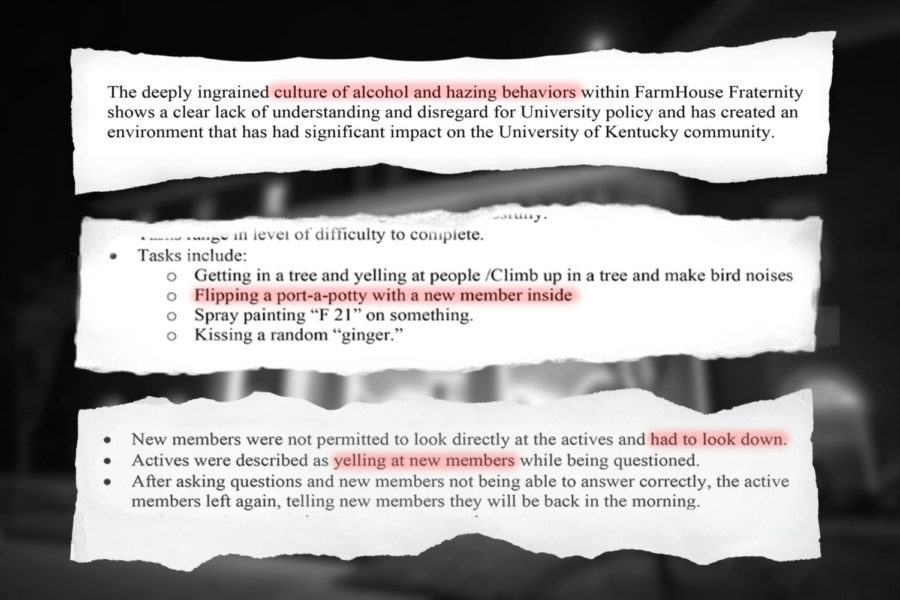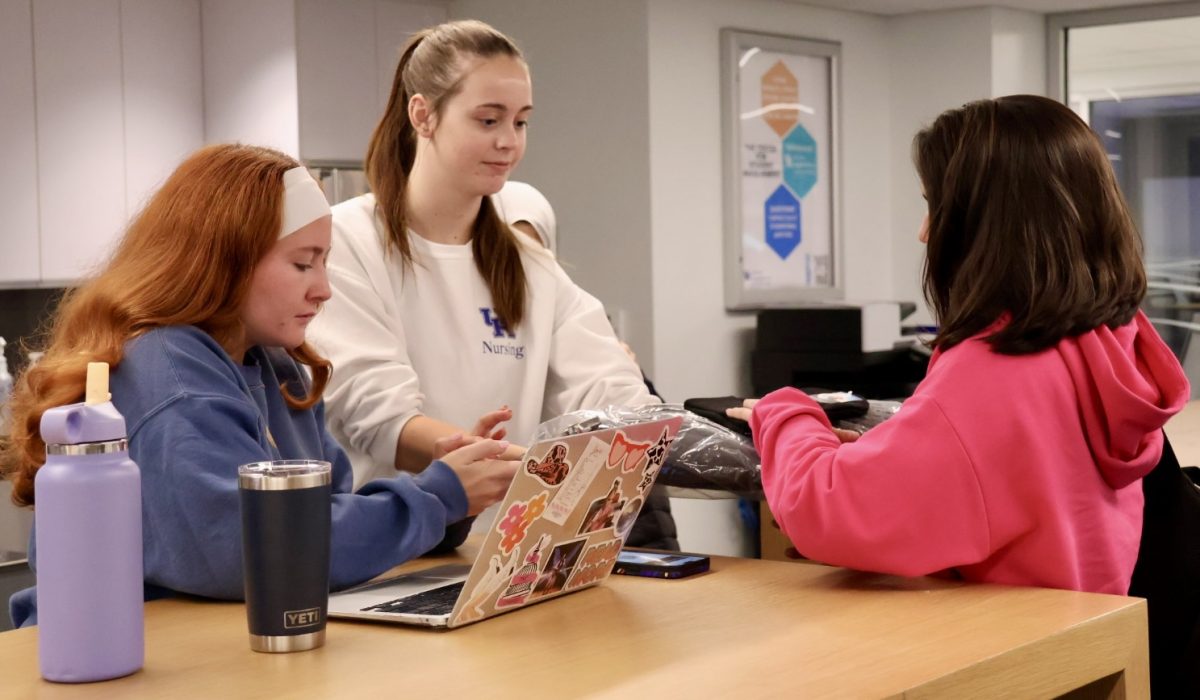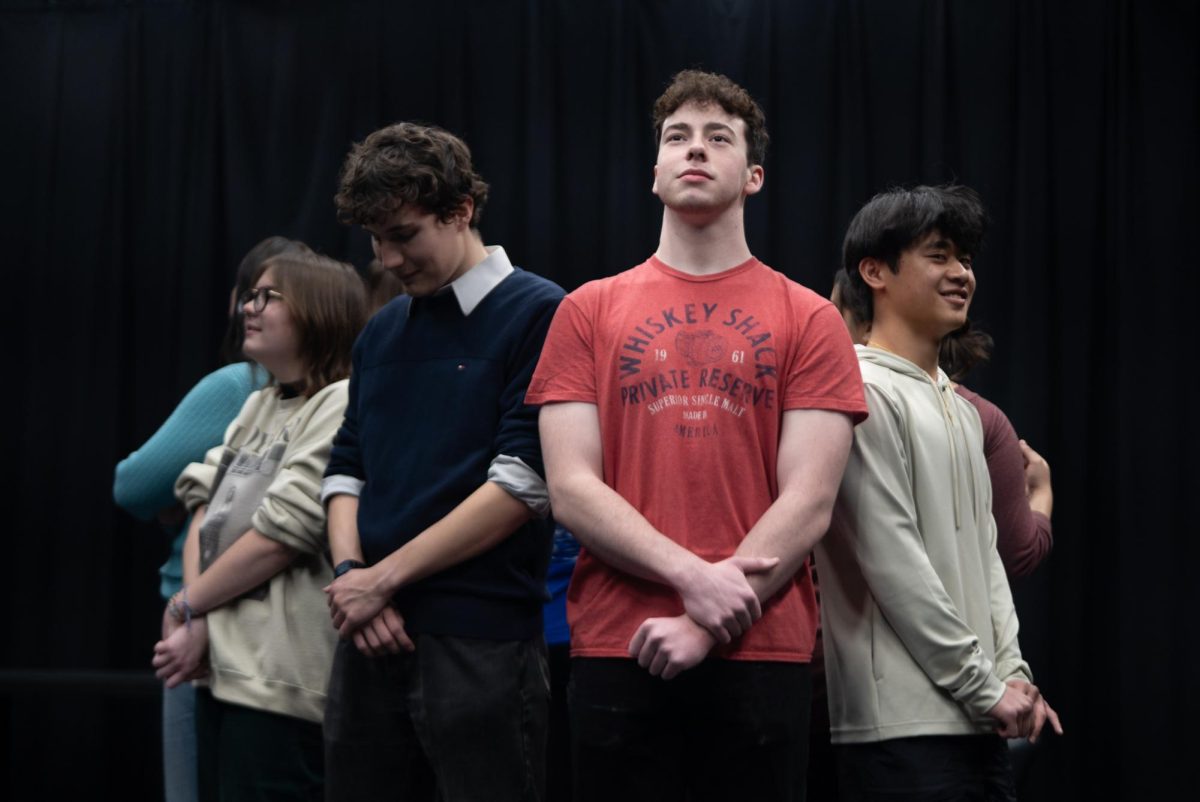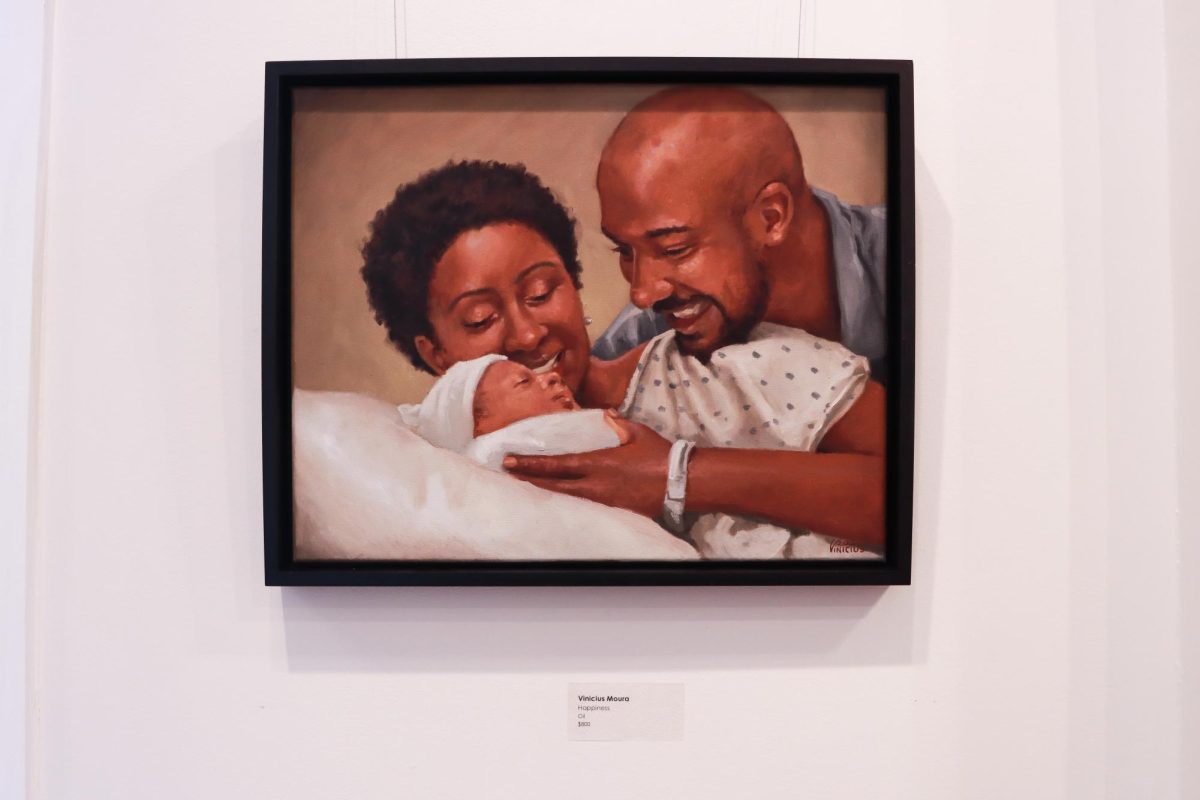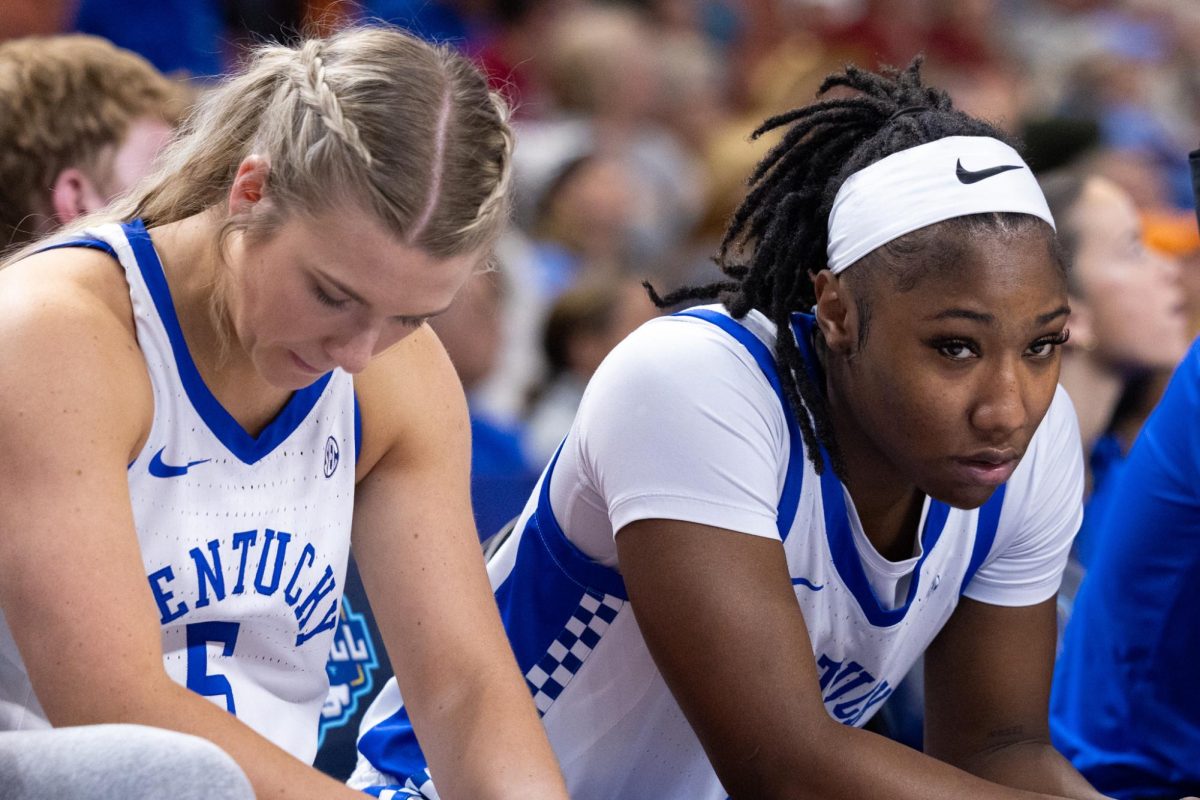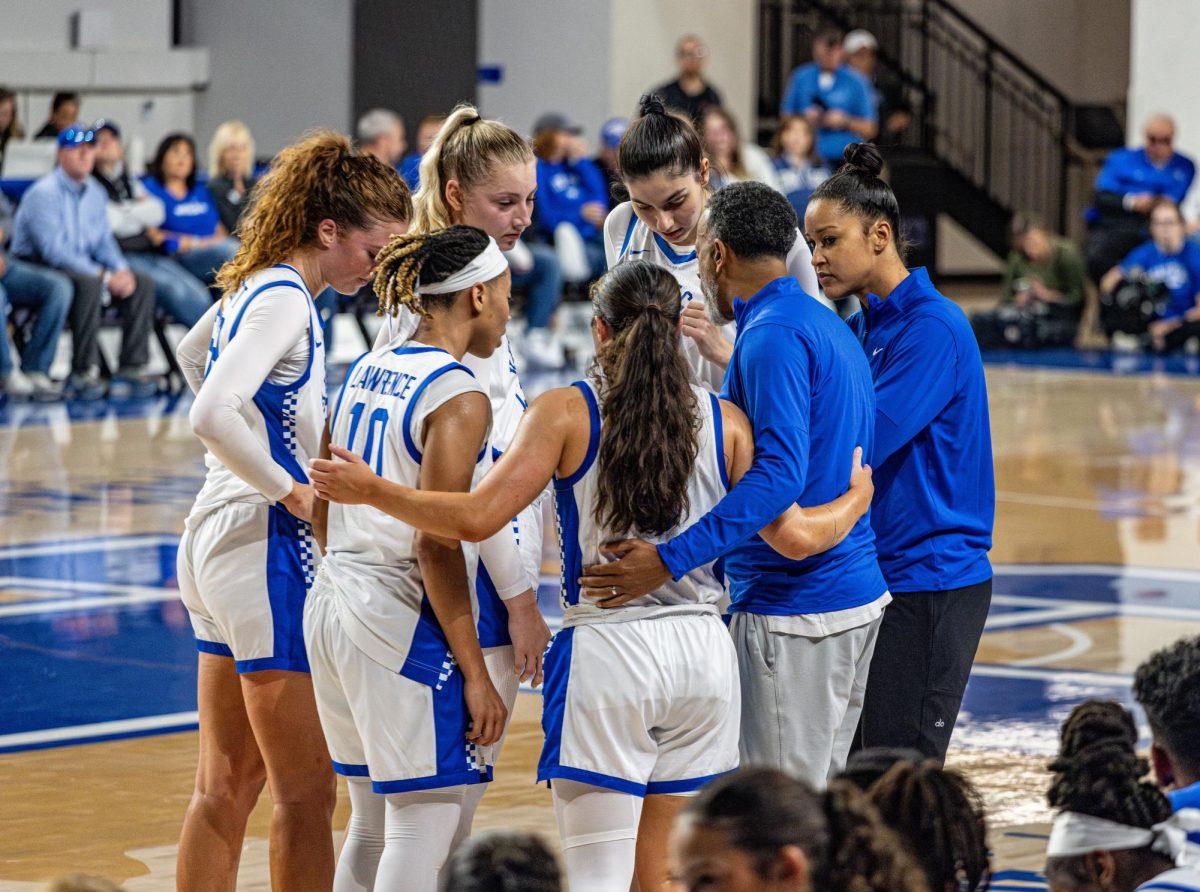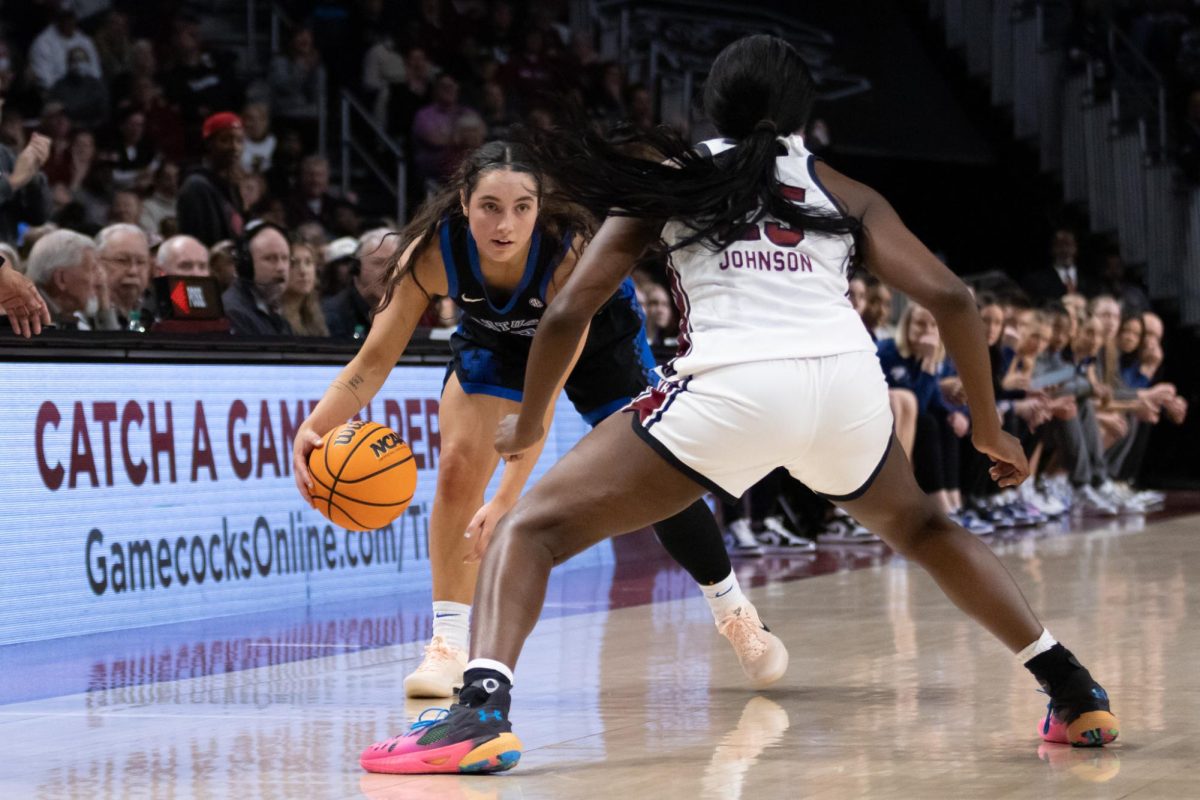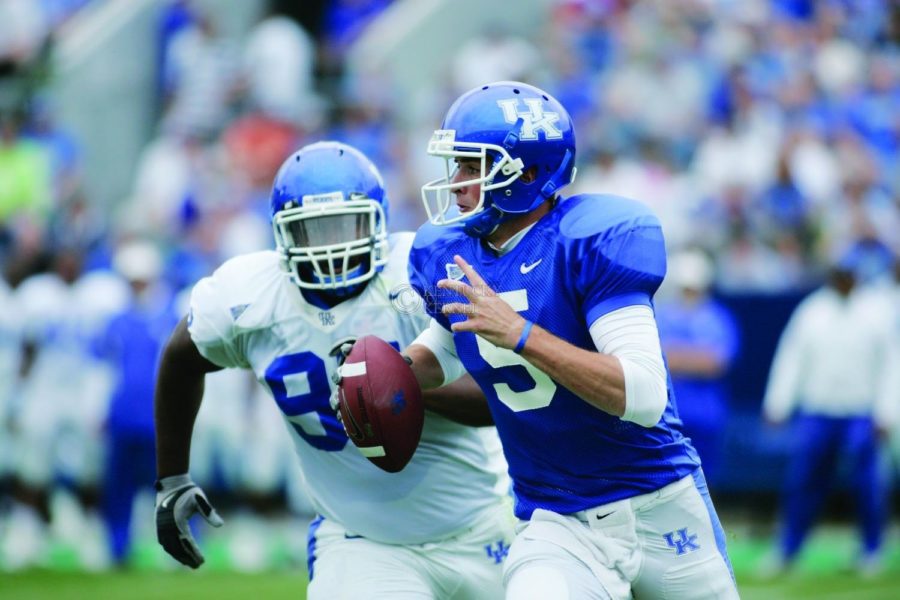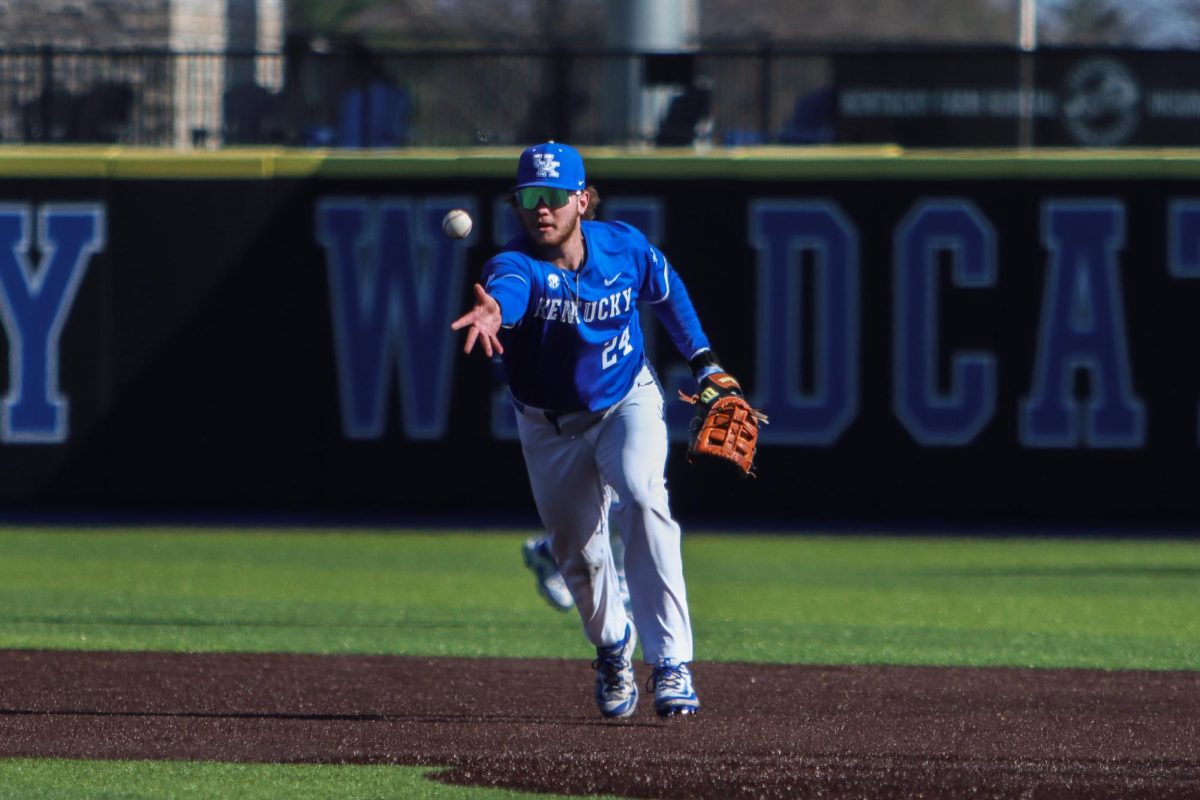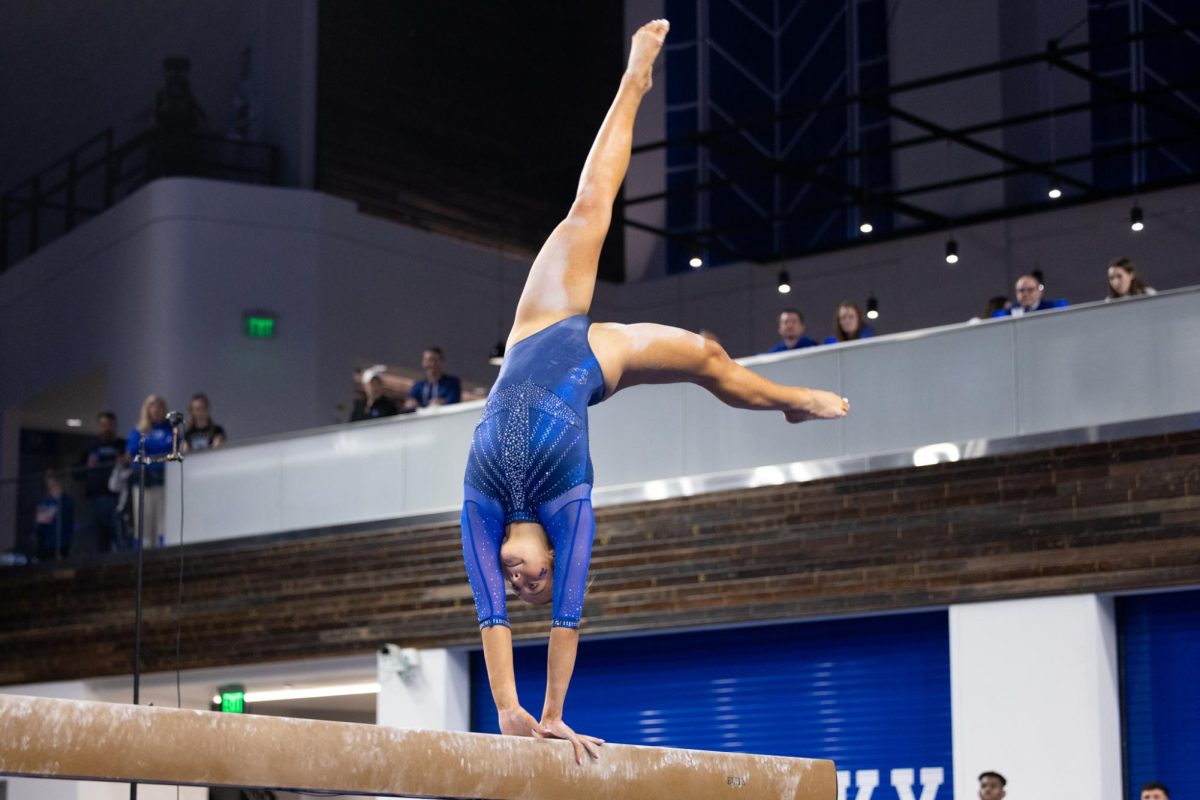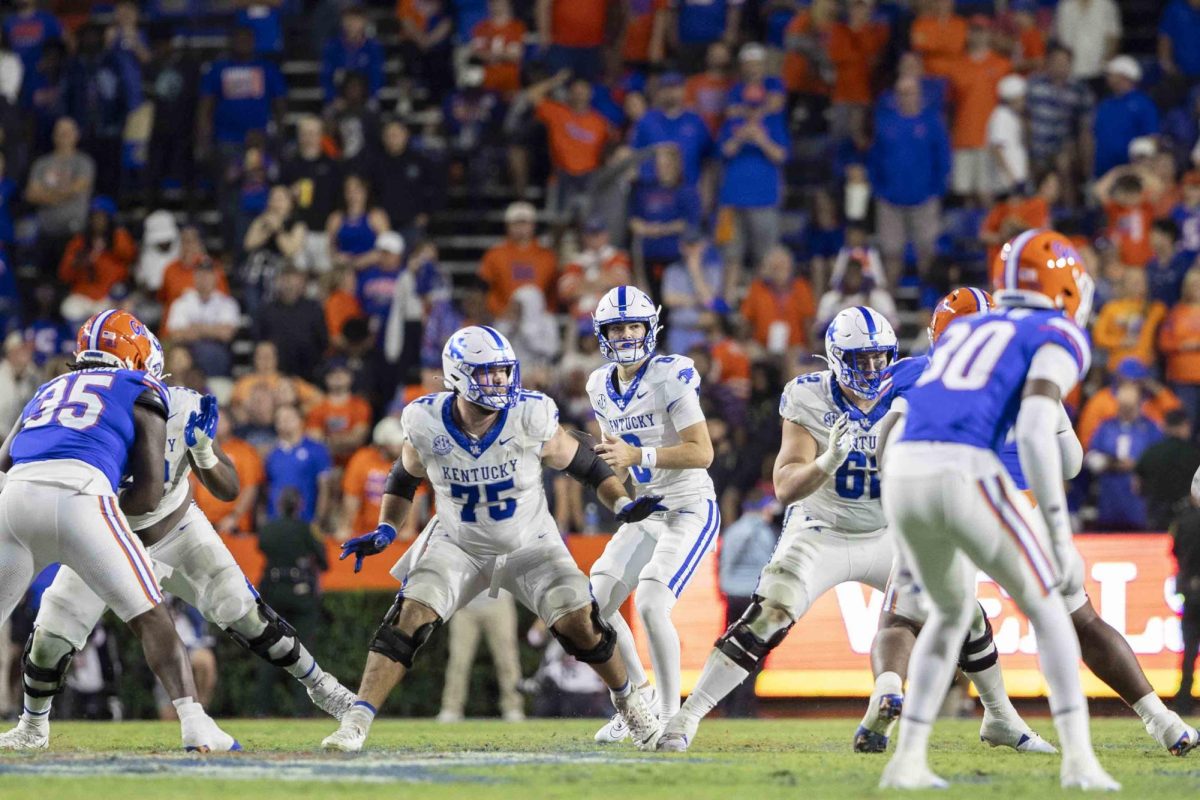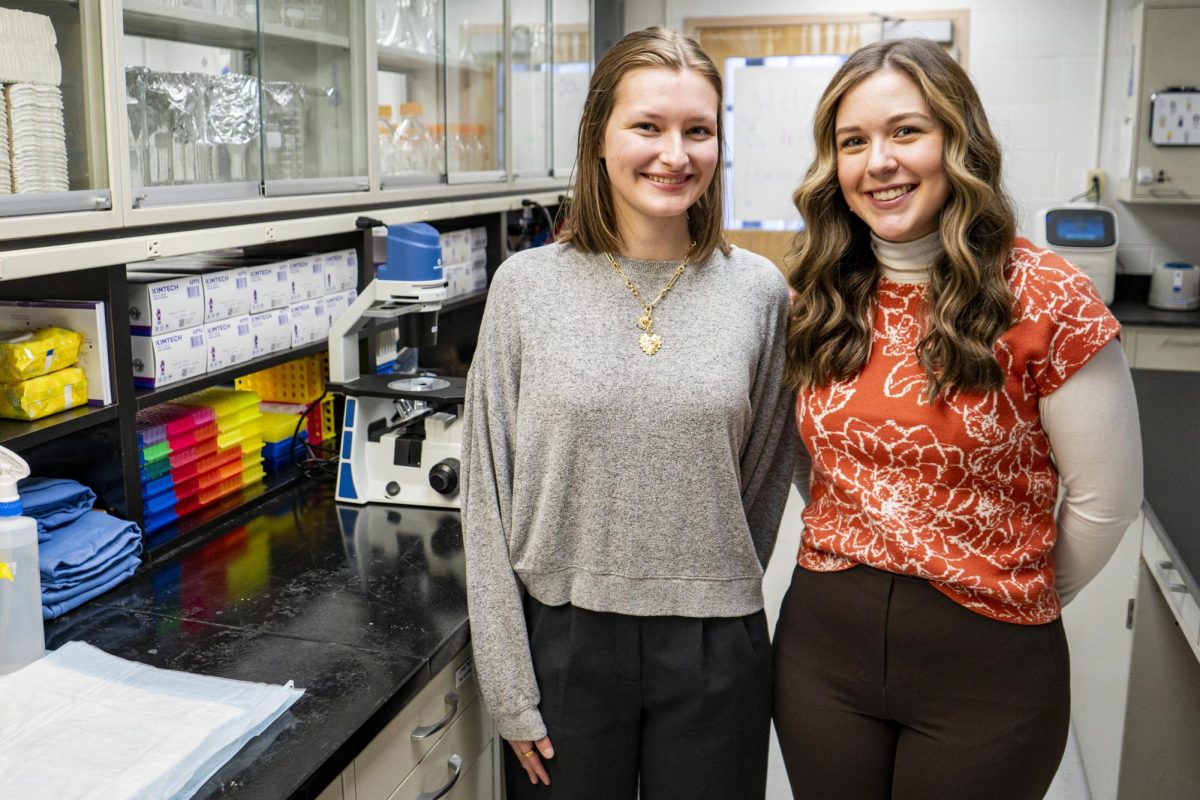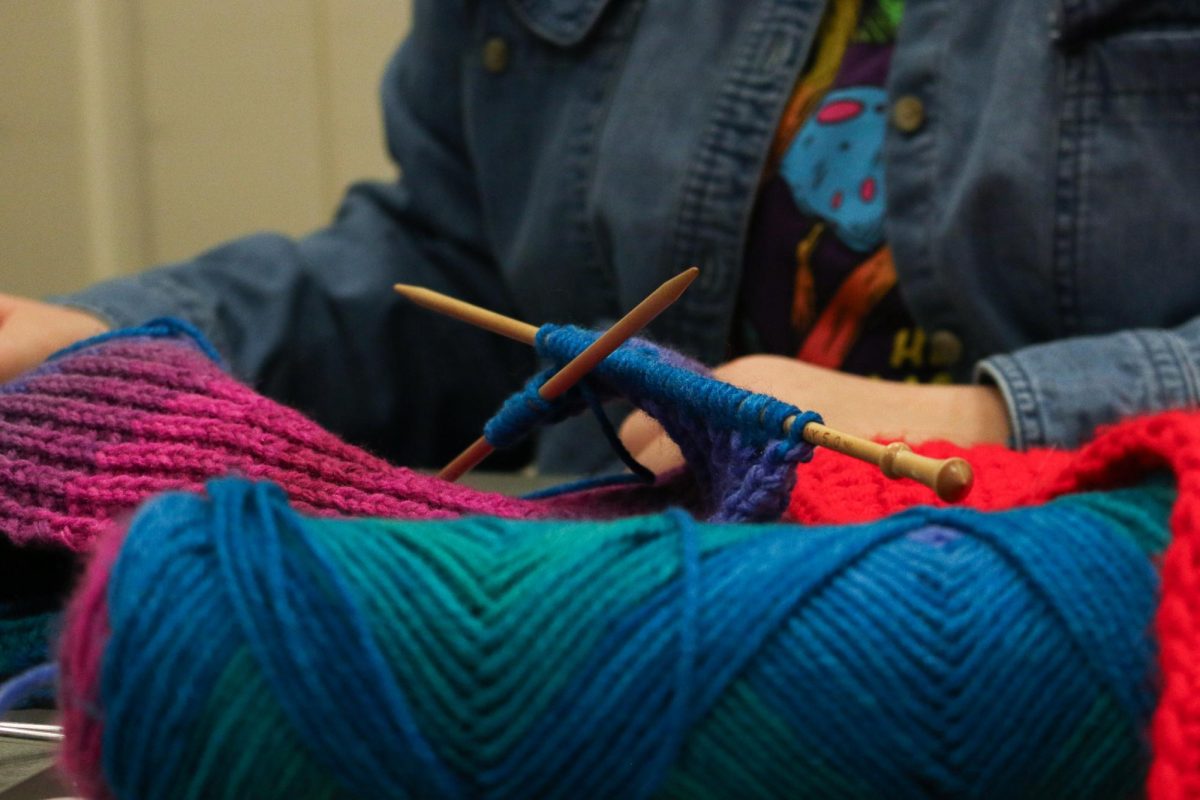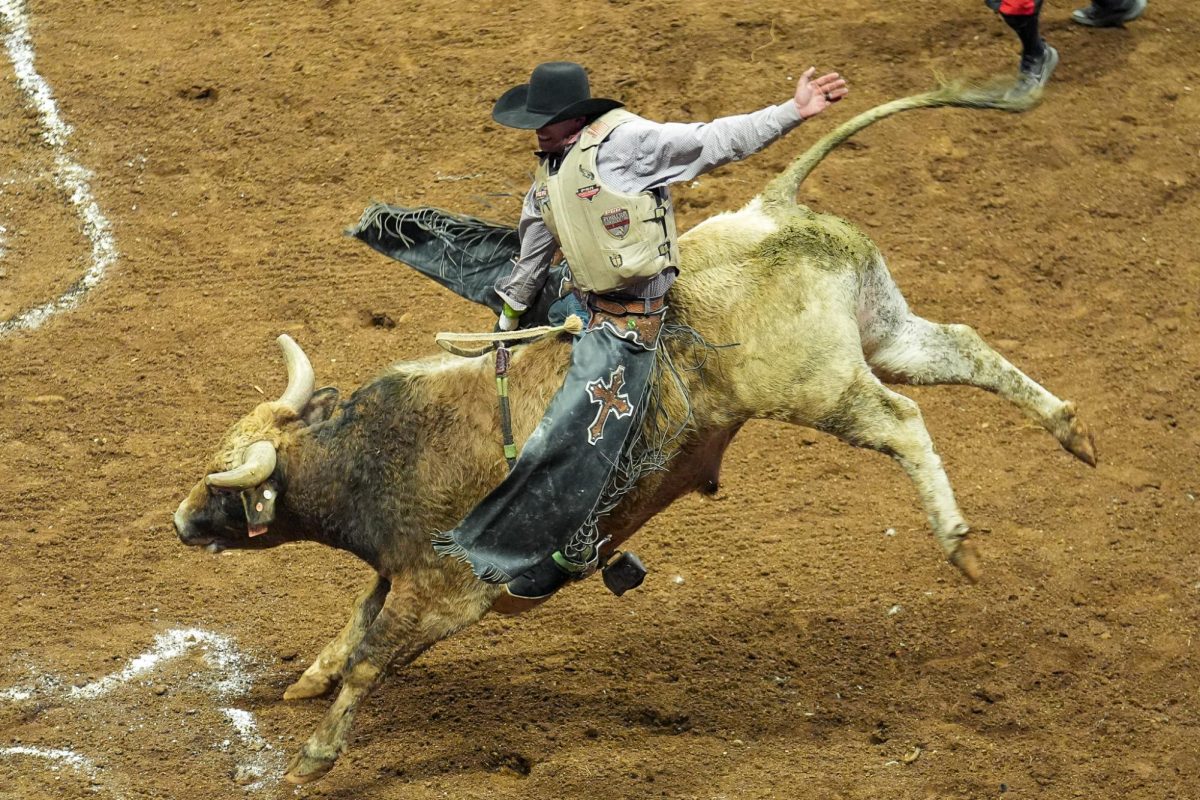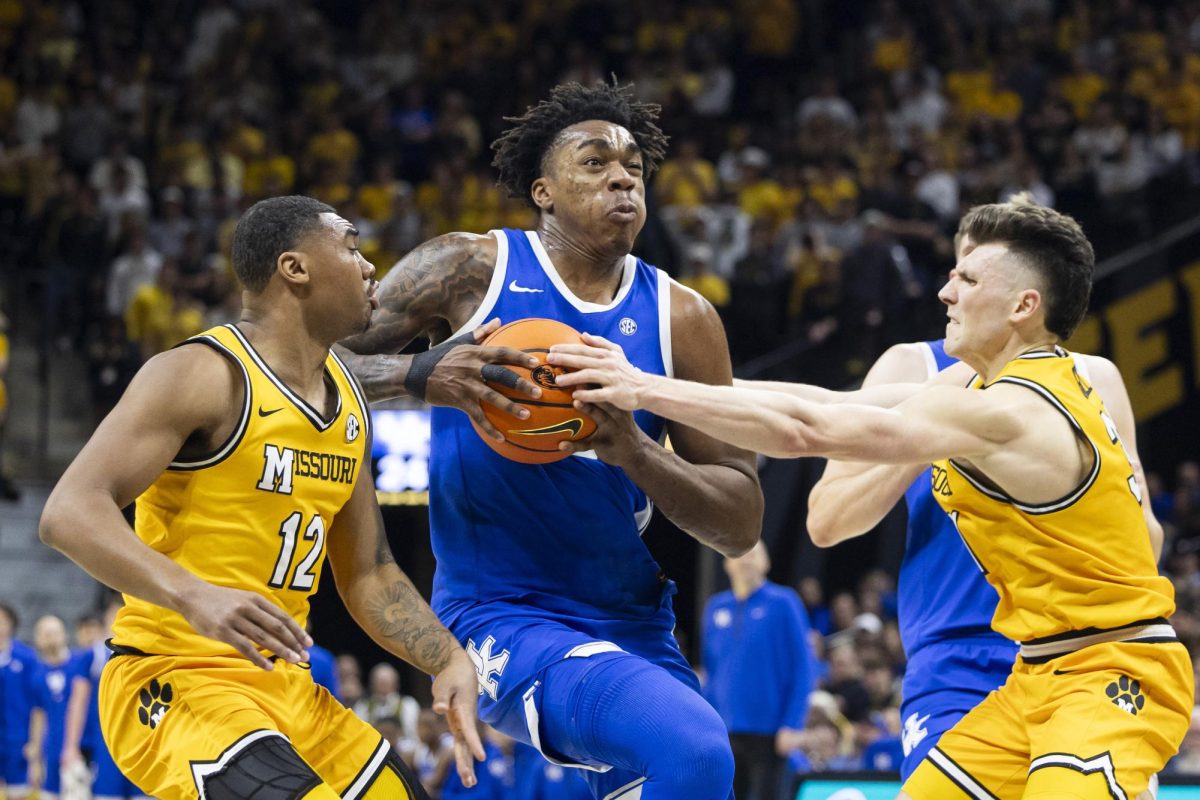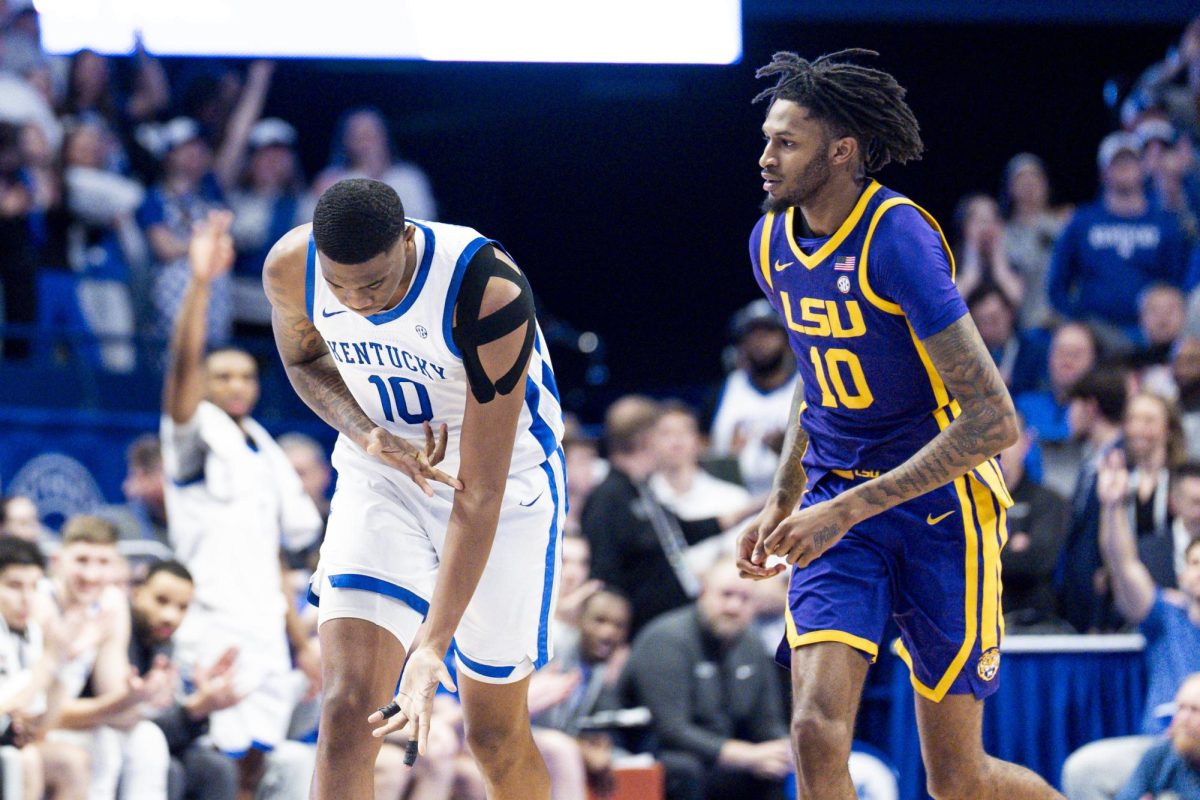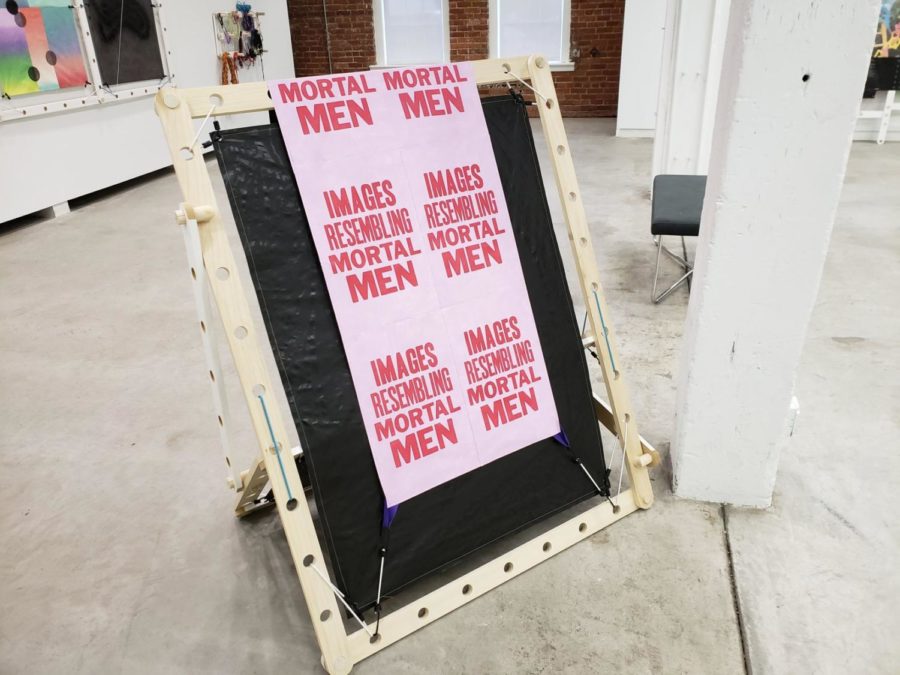‘In Shadows’ art exhibit toys with temporality
January 30, 2019
Located at the back of the Bolivar Art Gallery of the UK School of Art and Visual Studies is a collection of print-based artworks titled “In Shadows” by artist Tate Foley.
Among the works include a series of prints with the words “IMAGES RESEMBLING MORTAL MEN” stretched out over a wooden frame using bungee cords, and a structure resembling a black and white cube with a colorful print covering part of it saying “GOOD,” also surrounded by a wooden frame and bungee cords.
There is a running theme throughout all of Foley’s works, one of temporality. This is shown through the use of bungee cords, wooden frames, and other means, all of which suggest that the artworks can be disassembled, as gallery director Becky Alley stated. Alley has served as the gallery director since 2005.
“I think his work is very playful,” she said about the engaging nature of Foley’s work, going on to describe the talk Foley gave as just as fun and full of personality.
Each time the School of Art and Visual Studies brings in a new collection of works, it invites the artist behind the works to discuss their art in more detail, and these talks are open to the public. Foley’s was no different, and Alley noted that his talk was especially “accessible,” attributing this mostly to the fact that Foley is also an assistant professor of printmaking.
“Images carry no physical weight and have no lasting mark, just as shadows display a copy of an object for a short while and then vanish,” Foley said, regarding his works as a sort of highlighting of temporality. “I’m interested in balances as well— light and dark, good and bad, and permanent and impermanent.”
He then went on to discuss how, as with all his works, he started out by questioning what print media is and how it could be oriented in a gallery setting. In addition, he considered where people interact with print media and how they do so in the many facets of the world where they appear, from the real world to the virtual world. Foley wanted the works to be rather large, so he knew he would have to go beyond “framed works on paper,” and instead settled on the wooden frame-bungee cord setup currently on display.
Jonathan McFadden, an assistant professor of printmaking at UK’s School of Art and Visual Studies for six years, was the first to mention Foley’s name for display in the gallery. Each year, the faculty of the school convenes to decide which artists they will invite to have their works displayed in the galleries (of which there are two), and McFadden gave Foley’s name as a good candidate, especially given how his works would help “enrich the curriculum and expand how students see a particular medium being utilized.” McFadden noted the appeal Foley’s collection has as being related to an aesthetic not unlike something found at IKEA.
McFadden also emphasizes the underlying lessons conveyed through Foley’s works as those of experimentation. While printmaking can be traditional, artists like Foley are shattering this traditional idea and putting innovative spins on the medium.
Foley agreed with this idea in saying he enjoys using exhibitions like his current “In Shadows” display as “testing grounds for new forms in which [his] work can manifest.” He continued to mention that every work in the exhibition is entirely new, with some of them being assembled and taking form for the first time ever in the gallery itself. Foley credits this as being key to helping “keep [his] practice and research engaging.”
“In Shadows” will be on display at the School of Arts and Visual Studies until Feb. 9, and anyone can go view the art. Gallery hours and future exhibitions can be found online.

